Smethwick – Birmingham Development Framework
A co-ordinated approach to regeneration & development built around the legacy of the Main Line Canal
A development framework for one of the largest growth corridors in the country, running from the edge of central Birmingham to the town of Smethwick centred on the Main Line Canal. Multiple public sector stakeholders have come together to define the future growth within the corridor, including Birmingham City Council, Sandwell Council, West Midlands Combined Authority, NHS and Homes England.
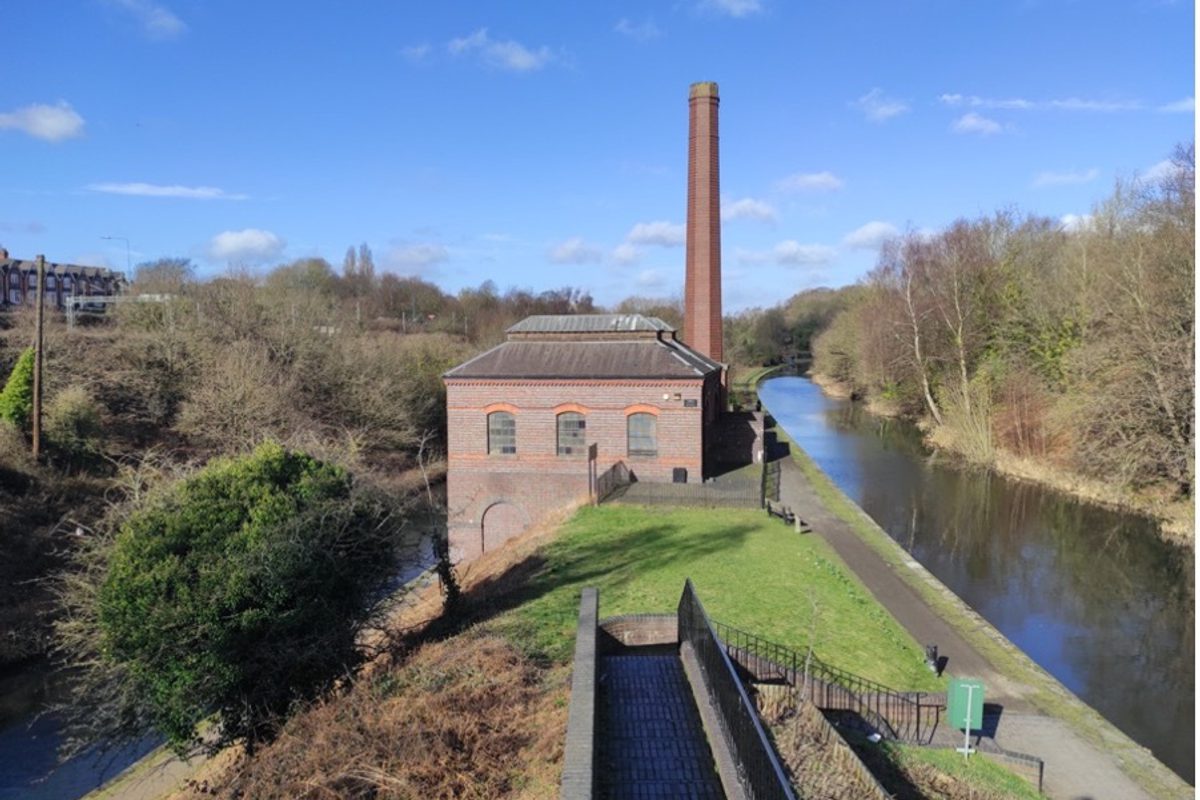
- Project Deliverables:
- Framework Supplementary Planning Documents & Grove Lane Masterplan
- Client:
- Birmingham City Council and Sandwell Council
- Collaborators:
- Tibbalds, Urban Movement, Aspinall Verdi
- Location:
- Smethwick - Birmingham
- Status:
- Corridor Framework adopted by Birmingham City Council as SPD. Grove Lane Masterplan approved by Birmingham City Council and Sandwell Metropolitan Borough Council as non-statutory guidance
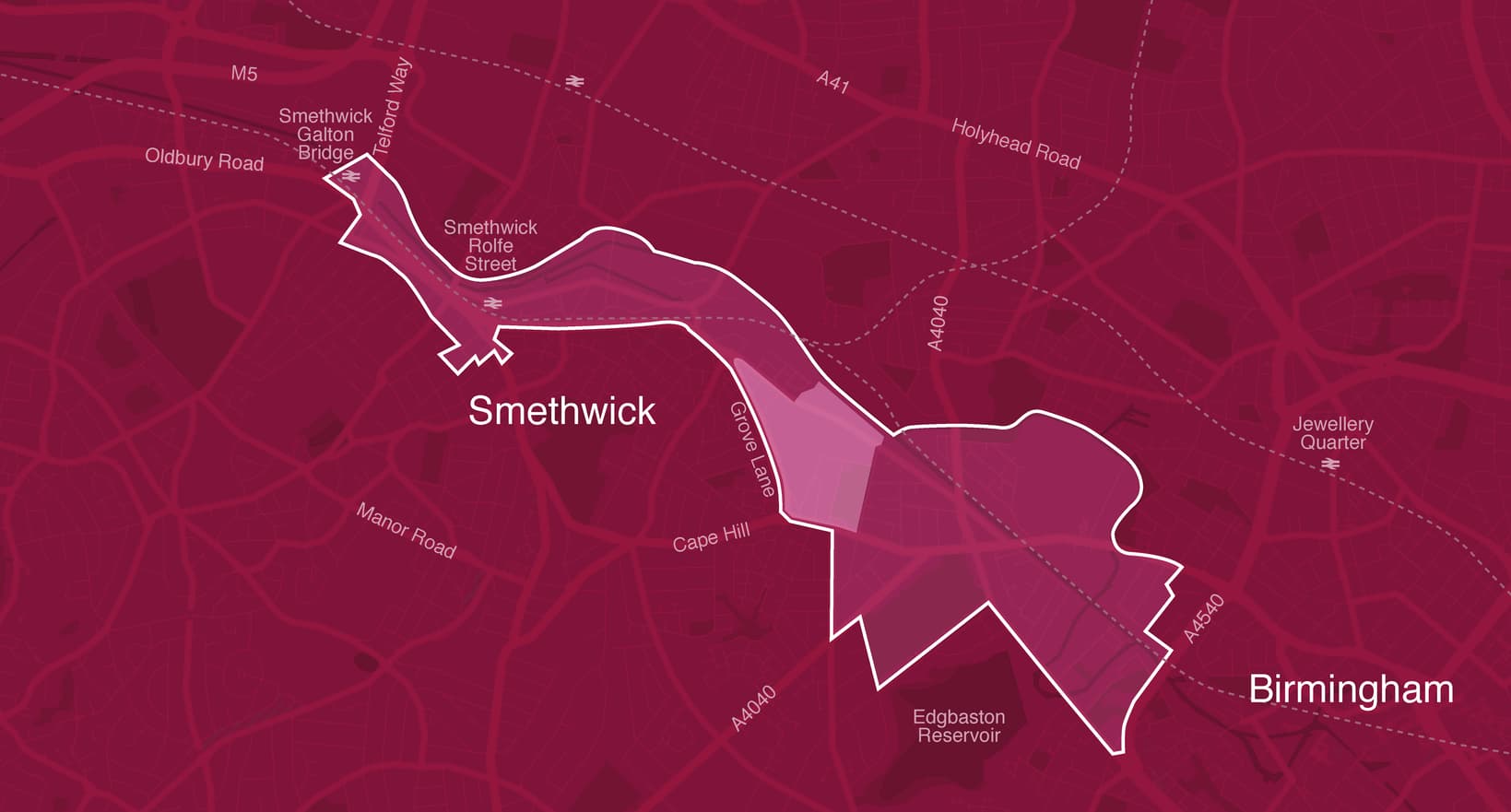
"This is an important regeneration corridor for Birmingham and the West Midlands which includes a housing-led redevelopment of the City Hospital and the Grove Lane area around the Midland Metropolitan Hospital. Integral to the plan is a transport strategy for delivering walking and cycling improvements throughout the area which accords with Birmingham City Council’s wider cycling and walking strategy and, local cycling and walking infrastructure plan. It’s also great to see local heritage featuring so centrally."
Cabinet Member for Transport and Environment, Birmingham City Council
We led a multidisciplinary team, working with Birmingham City Council and Sandwell Metropolitan Borough Council to develop a framework for the Smethwick-Birmingham corridor, a four-kilometre stretch of land that runs through a series of diverse neighbourhoods along the Main Line Canal.
The canal is a historic link between Birmingham and the Black Country and was a pivotal part of the Industrial Revolution. As such, the corridor is rich in heritage and has a unique and proud identity. Whilst the edge of Birmingham City Centre is already seeing new and innovative development schemes emerge, neighbouring Smethwick suffers from a negative perception. The framework bridges the gap between the two distinctive areas, creating an exciting catalyst for change.
Bridging the gap between the two distinctive areas
This was achieved by creating a shared vision for the area, promoting health and well-being of the local communities, active travel and high-quality and sustainable development. The ambitions for the area are explained and illustrated through a connected area wide framework, specific masterplans and development schemes for key opportunity sites.
The corridor framework and masterplans have been informed by extensive engagement with major stakeholders and community groups. The final consultation on the documents was followed by formal adoption as planning guidance upon which development and investment decisions can be made with confidence.
The corridor comprises a sequence of distinctive and unique neighbourhoods that are ethnically diverse and well-established, where places of worship often form the heart of the community. Due to the diversity of the population and the levels of deprivation seen in some areas of Smethwick, the communities were largely offline and insular, therefore it was of key importance to engage through known community leaders or voices within the different neighbourhoods.
The purpose of the framework is to accelerate the delivery of transformational regeneration within the corridor, in turn delivering a significant growth in housing provision as well as build confidence in the region’s brownfield first strategy.
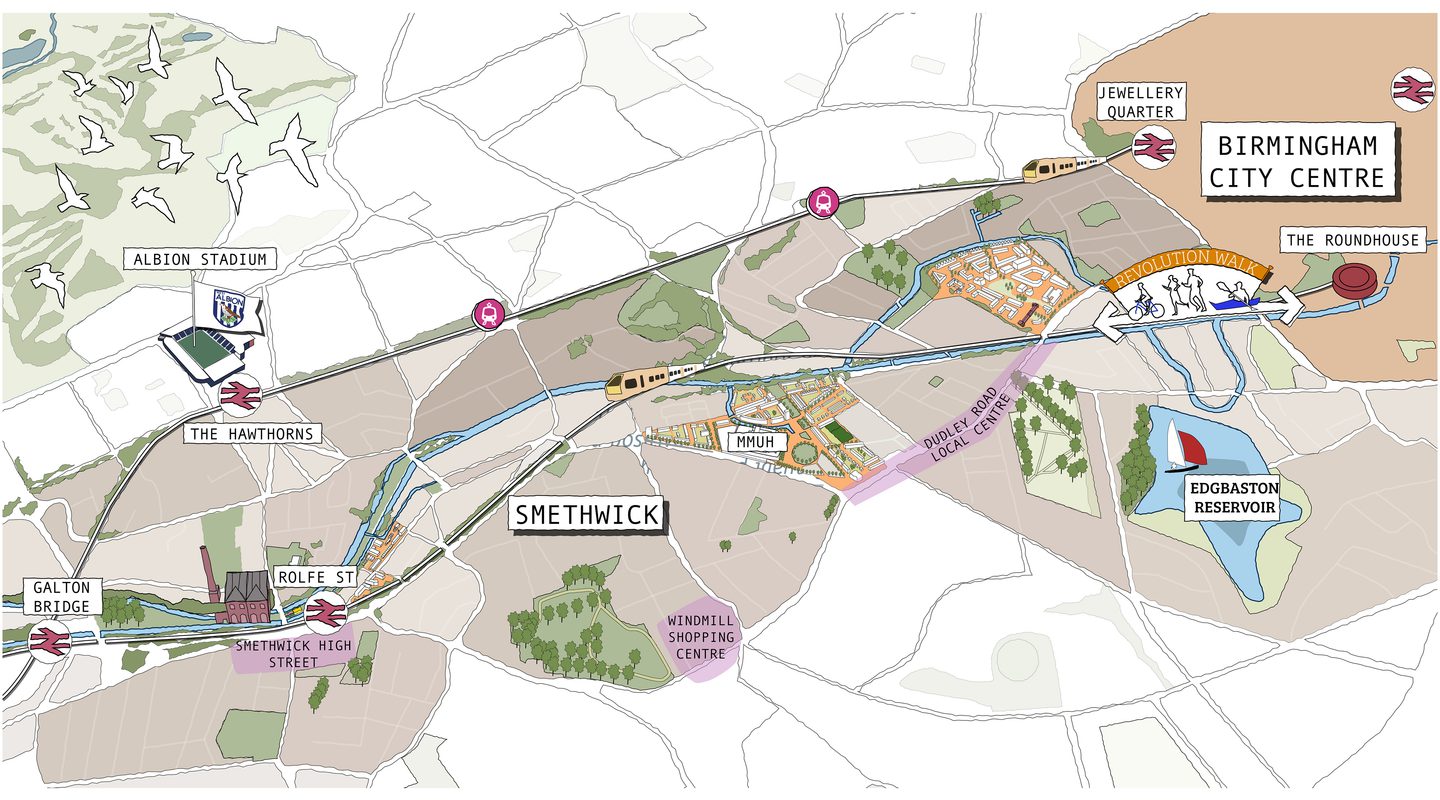
The wider client team was made up a group collectively known as the Partners, including Homes England, NHS, West Midlands Combined Authority and the Canal and River Trust in addition to the councils. Tibbalds worked with this group to identify potential sites for redevelopment and any other public realm or placemaking opportunities, that in turn fed into the overarching framework that provides direction for growth and a consistent approach to ensure that a new district emerges where people want to live, work and visit.
Within the heart of the corridor lies the new Midland Metropolitan Hospital, which provides a potential catalyst for dramatic changes which can help to sustain the existing, struggling local centres and creates opportunities for improved open spaces as well as improved and new connections into the Main Line canal for both movement and recreation. A more detailed masterplan was developed for the area around the new hospital by Tibbalds, which has been approved by both councils to be a material consideration in the determination of planning applications. This provides guidance for developers in respect of the aspirations for, and nature of, the development sought.
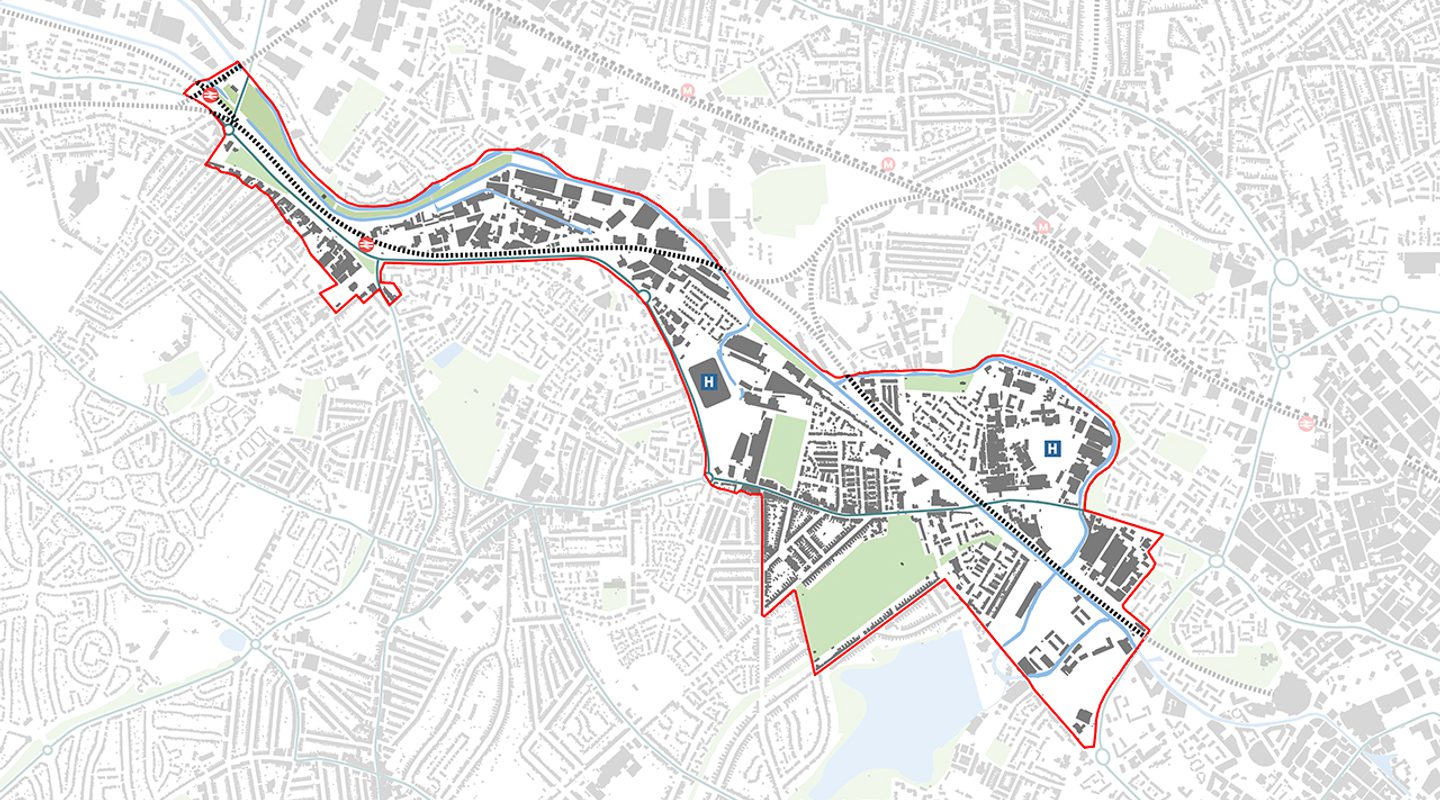
Guiding Principles
Promoting health and wellbeing was a principle that shaped the vision and principles for the corridor. These included strategic land use issues as well as promoting active travel:
- Healthy centres
- A new hospital as an anchor institution
- A green corridor
- An active travel exemplar
- Green new neighbourhoods
- Healthy sense of place
Health and Wellbeing
Unsafe and poor quality public realm and open space undermined the communities ability to walk and cycle with no variety of recreational opportunities or are poorly connected to surrounding neighbourhoods. This has resulted in an urban area which is heavily dominated by traffic and road infrastructure, with little opportunity for respite in open spaces or within the public realm. We took a strategic view of the corridor, to see how the connections to these spaces could be improved and how existing spaces could be reconfigured where possible to provide overlooking to create a sense of safety and a variety of recreational opportunities. In addition, the frameworks and masterplans encouraged street networks that put pedestrians and cyclists first to flip the current vehicular priority on its head. This, in combination with improved open spaces will offer safe, enjoyable and varied open spaces within the new and existing neighbourhoods for all to enjoy.
The frameworks for the key sites along the corridor including Grove Lane, City Hospital and Cape Arm, enhanced physical and visual connections between the site and the Main Line canal, a major asset which in places is currently out of sight and inaccessible. Through improved accessibility with new connections to the towpaths and the strengthening of the visual relationship between the built development and the canal, the framework aimed to reconnect the members of the community with this major heritage asset that is an important corridor for nature and wildlife.
The quality of the building stock is also of utmost importance when considering residents health and wellbeing, with regard to orientation, space standards, privacy and access to services and facilities. Through our masterplanning work we had constructive conversations with the local authorities to develop frameworks for high-quality new homes in compact neighbourhoods that fostered socialising between neighbours and active lifestyles.
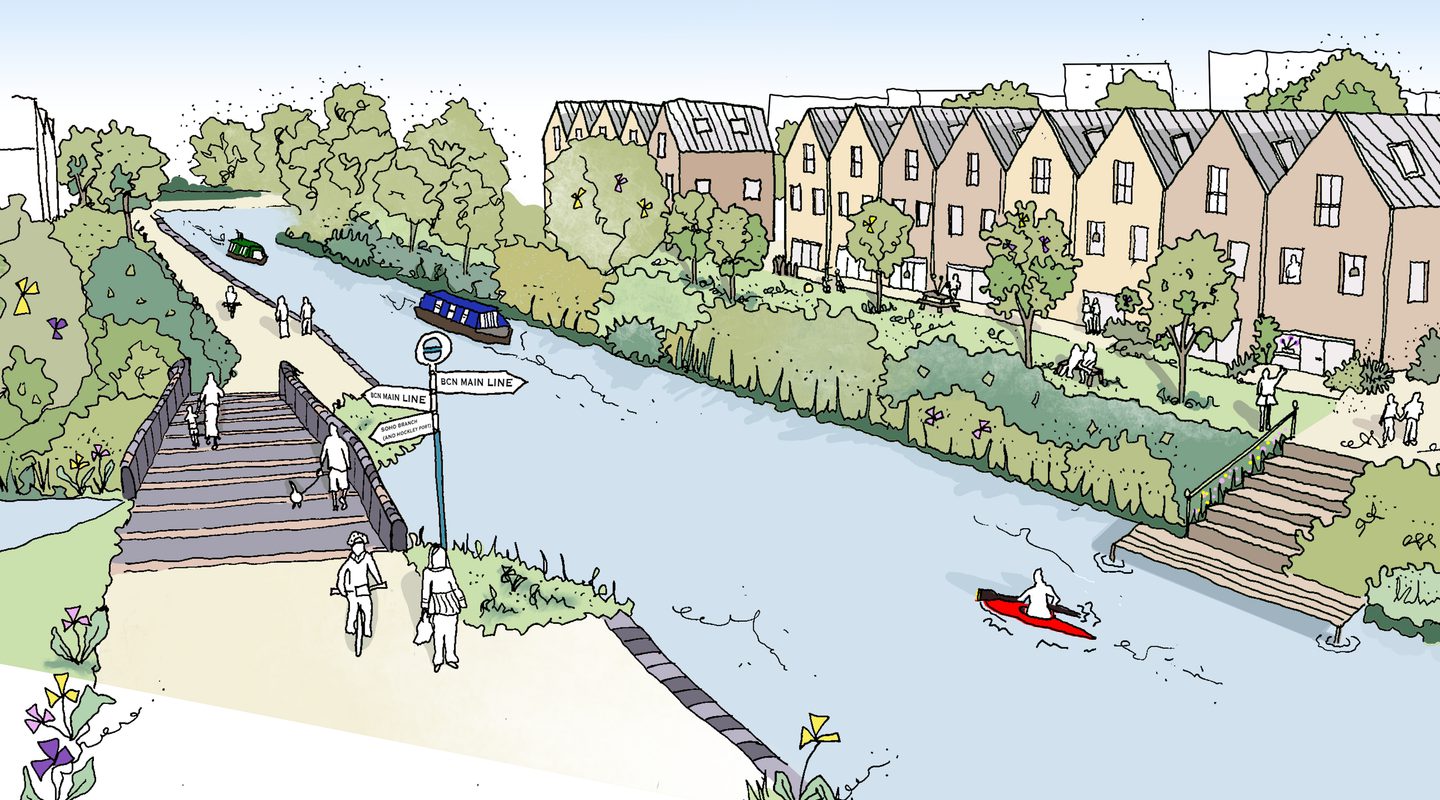
Distinctive and Attractive
The wealth of industrial heritage, particularly within Smethwick, formed the baseline formed the baseline for the corridor, providing a distinctive and unique character for the masterplans to respond to. The corridor provides a number of opportunities for unique urban design approaches; weaving industrial uses into residential and mixed-use environments to create truly distinctive places that are rooted in their context and history.
Mixed Communities
The corridor area comprises a wide and diverse mix of neighbourhoods, with existing local centres that are popular and well-supported by the existing residents within the area. Whilst developing the framework for the area, it was of utmost importance to protect and provide continued support for these local centres, some of which have niche local offerings. Providing walking and cycling connections between new and existing neighbourhoods and towards to the existing local centres was a key principle, as well as improving the environment within which the shops operate which at the moment is dominated by heavy traffic. In the case of the Grove Lane masterplan, it was important to ensure that the masterplan didn’t aim to compete with, instead complement the offerings of the existing local centres to make sure that the local businesses were not undermined and could continue to thrive.
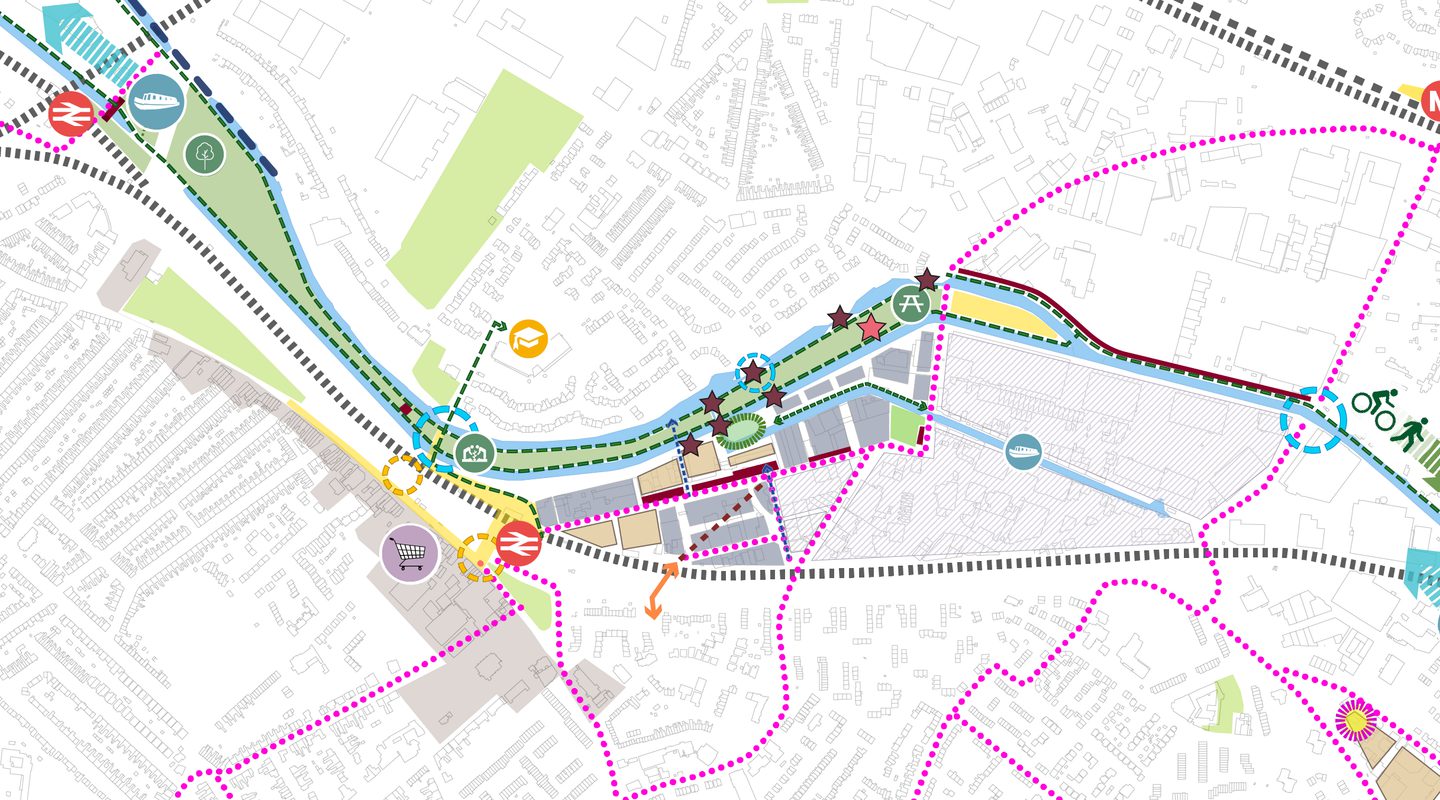
Active Travel
The Main Line Canal provides a unique driver for active travel in the area. The framework proposed an integrated network of cycle and pedestrian routes that connect into the canal, which forms a direct link between Birmingham and Smethwick and a route that grew hugely in popularity over the lockdown period. In addition to the canal, the transport network connects an otherwise fragmented collection of routes throughout Smethwick and Birmingham, creating route options as it was fully understood that whilst the canal may be optimum during certain times of the day and year, not everyone would feel safe using this corridor at all times. Increasing the availability and accessibility of pedestrian and cycle movement networks as well as exploring more compact urban typologies where suburban, car dominated neighbourhoods may otherwise have occurred, ensures applicants are working within a framework that encourages sustainable behaviours.
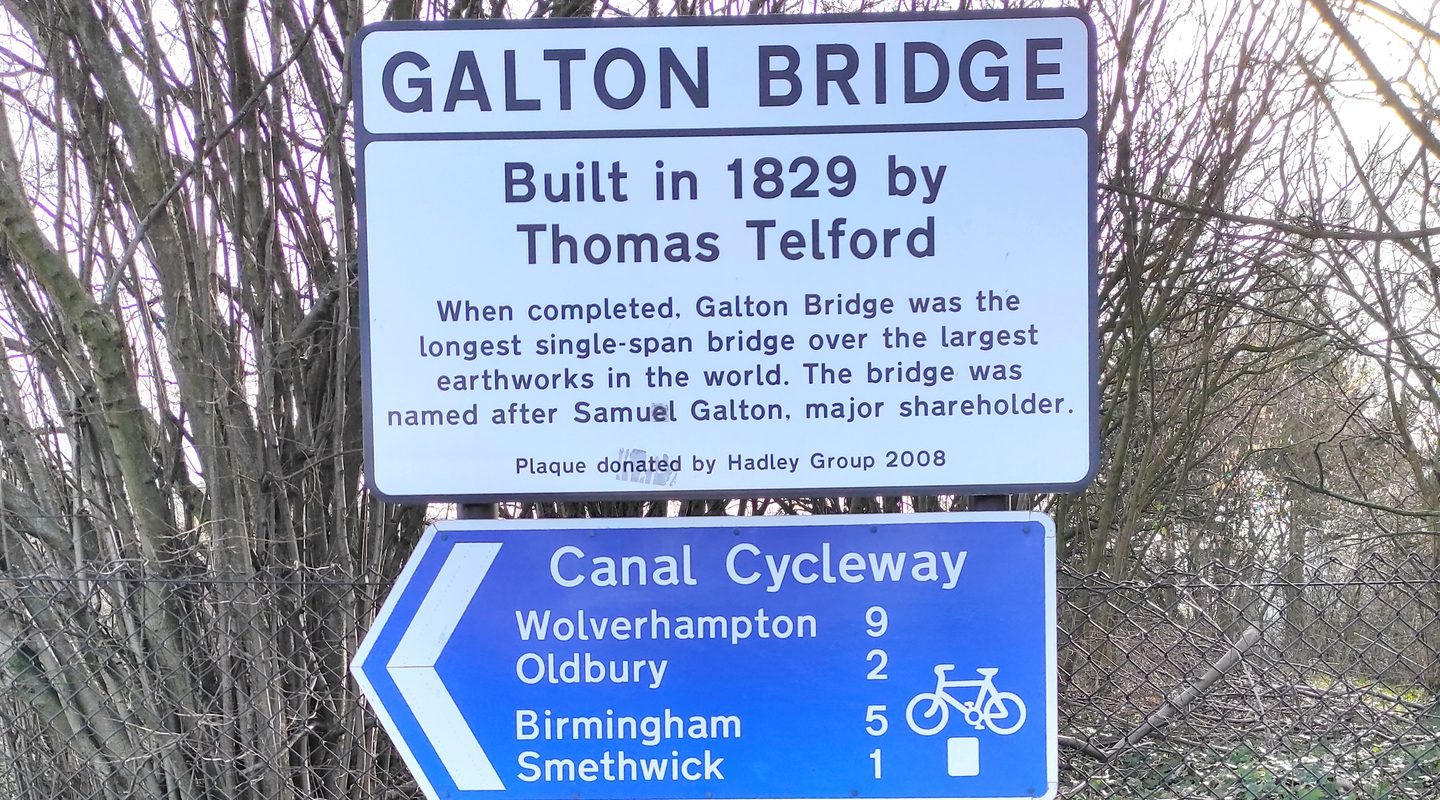
Midland Metropolitan University Hospital
The new Midland Metropolitan Hospital, set to open in 2023, is located at the heart of the corridor. With the surrounding land, it is one of the major intervention sites in Sandwell, a site for which Tibbalds prepared a masterplan to guide development and raise the bar on ambition in this area. The site covers approximately 18ha of brownfield land with the potential to deliver around 800 new homes. We set a vision for the area, to provide inspiration from best practice projects across the country, to demonstrate how the appropriate densities and capacities on the site could be achieved as part of a forward-thinking new development around the major new hospital.
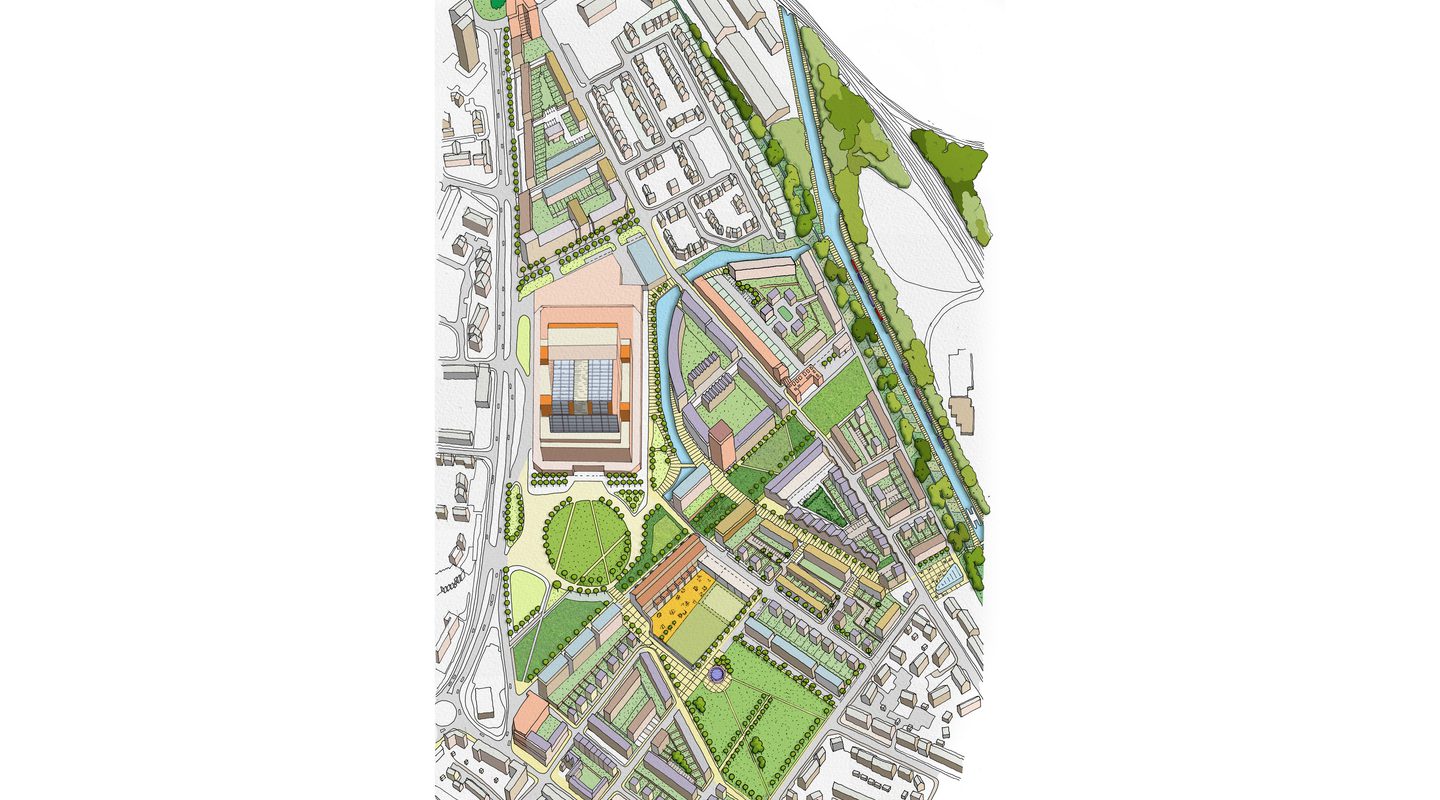
"The regeneration corridor between Smethwick and Birmingham contains significant sites for future regeneration. This exciting vision includes improved public realm and green spaces, improved transport links and access to facilities, and increased employment opportunities that will benefit all members of the community. We will seek to attract a range of house types and tenures that are sustainable and meet the needs and demands of the future residents."Councillor Iqbal Padda
Cabinet member for regeneration and growth, Sandwell Council
Awards
-
RTPI Award for Planning Excellence 2022 - Winner of 'West Midlands Best Plan' -
Finalist in Excellence in Plan Making Practice category at the RTPI National awards 2022 -
Planning Awards 2022 - Shortlisted in the 'Award for Planning for Increased Housing Delivery' category
Core Team
Below are some of the key people that worked on this project.
-
 Katja StilleDirector
Katja StilleDirector -
 Amy SweetingAssociate
Amy SweetingAssociate

Start the conversation...
Learn more about Smethwick – Birmingham Development Framework and other projects by contacting one of our team
Call Katja on 0207 089 2121 or email mail@tibbalds.co.uk